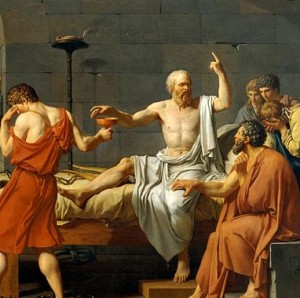At the Guggenheim, In the Garden of Good and Evil
Posted in Programs and Events on May 21 2013, by Ann Rafalko

Since ancient times, all cultures have used plants as a source of medicine, from a European willow tree that produces the active ingredient in aspirin to the Pacific yew, the source of the cancer fighting drug Taxol. Many of these plants straddle a fine line between helpful and harmful.
A few years ago it was discovered that flowers in the genus Narcissus, also known as the cheery yellow common daffodil, contain a compound that may help combat dementia. But, as anyone who has ever battled garden pests will tell you, one of the reasons that daffodils are common and beloved by gardeners is because they contain a toxic compound that keeps critters at bay, so you certainly do not want to walk out to your backyard, dig up a bulb and take a bite out of it in order to gird your brain against future memory loss.
That’s the thing about medicinal plants: they can both save and kill. They can be used for spiritual healing as well as physical healing. This healing dichotomy is the focus of an exciting upcoming event being produced in cooperation with the Guggenheim Museum and the New York City Ballet. “Garden of Good and Evil: Harmful and Healing Properties of Plants” is an interdisciplinary presentation that combines performing arts and science.
Dr. Michael Balick, curator of Wild Medicine: Healing Plants Around the World and Vice President for Botanical Science, Director and Philecology Curator of the Institute of Economic Botany at The New York Botanical Garden uses excerpts from theatrical performances to discuss the healing and harmful properties of plants and the use of plant-based remedies and poisons. New York City Ballet principals Sara Mearns and Adrian Danchig-Waring and members of the Corps de Ballet Devin Aberda and Andrew Scordato perform excerpts from George Balanchine’s A Midsummer’s Night Dream and Tom Gold’s Shanti. Chris Murrah directs the witches scene from William Shakespeare’s Macbeth, and a video excerpt from the Metropolitan Opera’s production of Gaetano Donizetti’s L’Elisir d’Amore will also be shown.
Part of the Guggenheim’s Works & Process series, this exciting multimedia event will be held at the museum in Manhattan on Sunday, June 2 and Monday, June 3 at 7:30 p.m. Tickets are available now.
Image courtesy of Wikimedia Commons.

